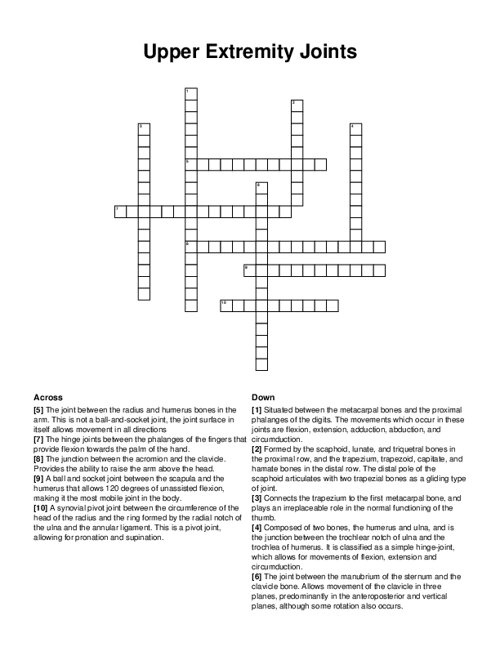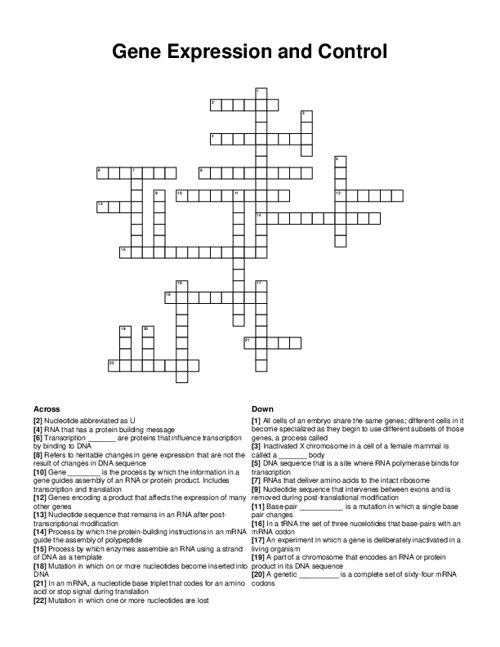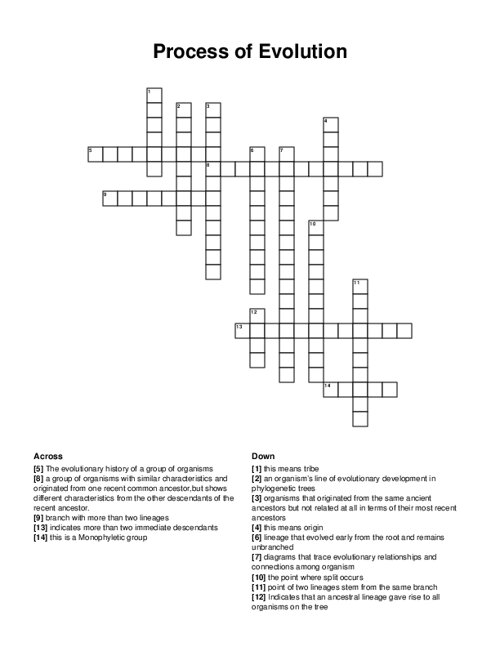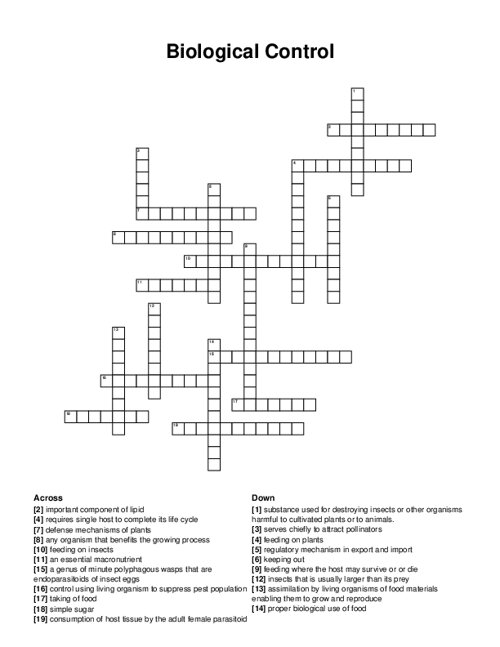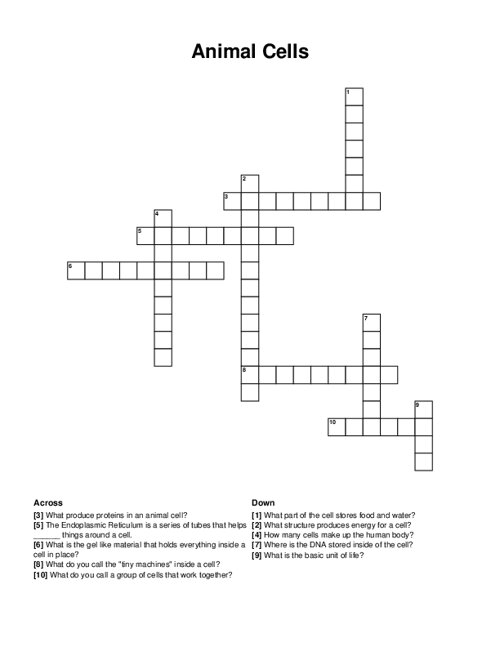Upper Extremity Joints Crossword Puzzle
Download and print this Upper Extremity Joints crossword puzzle.
Related puzzles:
QUESTIONS LIST:
- interphalangeal : the hinge joints between the phalanges of the fingers that provide flexion towards the palm of the hand.
- metacarpophalangeal : situated between the metacarpal bones and the proximal phalanges of the digits. the movements which occur in these joints are flexion, extension, adduction, abduction, and circumduction.
- midcarpal : formed by the scaphoid, lunate, and triquetral bones in the proximal row, and the trapezium, trapezoid, capitate, and hamate bones in the distal row. the distal pole of the scaphoid articulates with two trapezial bones as a gliding type of joint.
- glenohumeral : a ball and socket joint between the scapula and the humerus that allows 120 degrees of unassisted flexion, making it the most mobile joint in the body.
- radioulnar : a synovial pivot joint between the circumference of the head of the radius and the ring formed by the radial notch of the ulna and the annular ligament. this is a pivot joint, allowing for pronation and supination.
- ulnohumeral : composed of two bones, the humerus and ulna, and is the junction between the trochlear notch of ulna and the trochlea of humerus. it is classified as a simple hinge-joint, which allows for movements of flexion, extension and circumduction.
- acromioclavicular : the junction between the acromion and the clavicle. provides the ability to raise the arm above the head.
- carpometacarpal : connects the trapezium to the first metacarpal bone, and plays an irreplaceable role in the normal functioning of the thumb.
- sternoclavicular : the joint between the manubrium of the sternum and the clavicle bone. allows movement of the clavicle in three planes, predominantly in the anteroposterior and vertical planes, although some rotation also occurs.
- radiohumeral : the joint between the radius and humerus bones in the arm. this is not a ball-and-socket joint, the joint surface in itself allows movement in all directions
